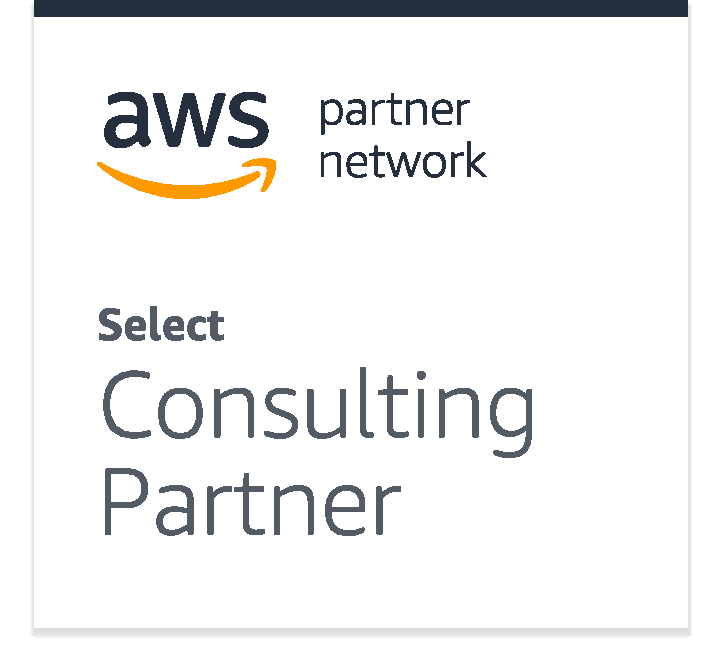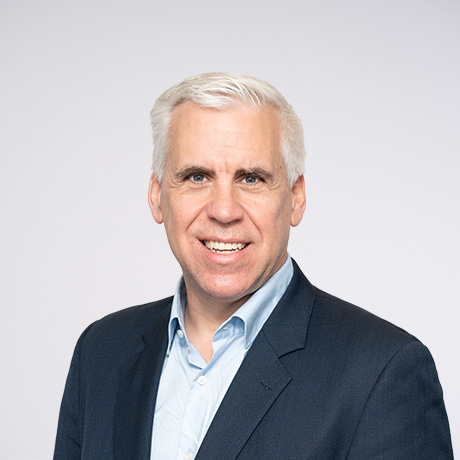HIGHLIGHTS
The best moments of AWS re:Invent
What were some of the most important topics being discussed this year? Our team shares their insights.
The power of partnerships
Ramiro de la Rosa, Director of Strategic Partnerships: There’s an old saying “two heads are better than one” – well, 25,000 heads to be more accurate, if you count the number of delegates convening at this year’s AWS re:Invent. As an AWS select consulting partner, we were really excited to be fully emerged in the throng of conversations going on around the event. The enormous exhibition hall was teeming with system integrators, vendors, start-ups, and a huge array of service providers. You could meet anyone from large enterprises, to satellite operators, racing teams, and gaming companies, which is a testament to the sheer breadth and scale of businesses being powered by the cloud these days.
As Director of Strategic Partnerships at Oliver Wyman, my role is to think about how we get the best out of our relationships and alliances. What constitutes success? Which factors are driving the most successful collaboration? And how do you build new partnerships?
Here are my top three criteria for powerful partnerships:
- Patience and perseverance: Many of the great partnership stories we’ve heard about at re:Invent have taken years to bring to fruition, with the essential ingredient being a long-term vision to succeed. At these events, collaboration often looks effortless and seamless. But we all know that getting to this level of comfort takes a lot of hard work and many ups and downs to break down silos across complex ecosystems, geographies, time zones, and industries. Not giving up at the first sight of trouble is essential.
- Self-awareness and humility: In business it’s impossible to be the best at everything. Recognising your weak spots and acknowledging that someone else could do that part better is key to building win-win relationships. Be frank with yourself about what you can’t provide and find a partner that complements you. Find synergies across your brands and treat your differences as strengths.
- Openness: Frank and honest communication among partners can be difficult, but information empowers relationships and makes them evolve. Without it, companies navigate relationships blindly, making clumsy mistakes. Having honest and committed partnerships can help you broaden your reach with new audiences (such as through co-branded initiatives). This can elevate both your brands and jointly build awareness.
A combined approach goes way beyond making more sales. It’s about challenging the status quo and supporting innovation, allowing businesses to focus on the value-add activities for their customers. We are really excited to see how our time on the ground at re:Invent will help us deepen existing relationships and forge new, powerful partnerships.
How technology is becoming more accessible
Deborah O’Neill, Partner and Head of Digital Europe: This sheer scale and choice on offer at re:Invent has certainly made it a worthwhile trip for me over the Atlantic. As expected, Adam Selipsky’s highly anticipated keynote contained important updates on new offerings, from higher performance and more cost effective compute, through to the ability to build your own private 5G network in a matter of days.
For me as leader of Oliver Wyman Digital Europe, the standout stories have been from those large, complex organizations, for whom transformation is not just about new technology, but rewriting the rulebook both strategically and culturally. Perhaps this is because technology is changing in a way that democratizes the possibilities across an organization, meaning that a broader set of people can benefit, not only the technology-savvy individuals. For example, in one session, United Airlines Chief Digital Officer, Linda Joj, shared how they had taken a CustomerFirst-approach to developing their new travel tools enabled by cloud technologies. This has radically improved their net promoter score (NPS) but also simplified how customer services staff can help through better information and joined up systems.
Of course, there has been a huge range of sessions on data, machine learning, and the increasing use of artificial intelligence (AI) to enable chat bots. I was heartened to see a stronger focus on support and tooling for those who haven’t got coding skills but want to make evidence-based decisions. Amazon QuickSight and Amazon SageMaker Canvas will allow users to create dashboards and ask questions of their data using plain English. In the future, they also expect it to help people make predictions, which will be a game changer for those setting strategy or making commercial decisions on where to place their bets.
Equally, no and low code has been a topic of debate for a while and it is great to see solutions that support this direction hitting more of a mainstream offer.
My advice based on my observations here? These conferences are an important forum for senior business leaders to stand shoulder-to-shoulder with their technology counterparts. In an unpredictable world, most successful enterprise leaders will be those who immerse themselves in these opportunities to learn how to transform, grow, retain talent, or fundamentally speak the same language as the next generation.
The importance of a security-by-design mindset
Paul Mee, Partner: Security mindset, design, and delivery have been major themes at re:Invent this year. With a ransomware attack happening somewhere on the planet every 11 seconds and the average demand now exceeding US$5,000,000, security is firmly top of mind for executives, service professionals, and the development community more broadly.
Given this context, the AWS Security Reference Architecture (SRA), published earlier this year, represents a clear, structured, and determined strategic move to enable greater defences to be put in place and for cloud services to be in the vanguard regarding data security and cyber resiliency.
I personally like the holistic nature of the SRA. Typical security related frameworks cover infrastructure and the mechanics of network or application standards and security protocols. The AWS SRA goes a lot further, covering not only infrastructure but also services, security capabilities and applications, workloads, and, critically, Organization Management.
Yes, the AWS SRA is a guideline. But a very important one. The reference architecture is not overly prescriptive and choices can be made regarding what and how to adopt any or all of the associated structures and componentry. Cybersecurity is arguably still a relatively new discipline where designing and deploying sufficient defences against a persistent enemy is a form of invisible arms race. The AWS SRA represent a strong basis for organizations to become more secure and to evolve to be collectively more resilient through best practices sharing using a common taxonomy and vocabulary.
For too long security has been an afterthought, a compliance requirement to be reluctantly adhered to, or a late-stage bolt on. Now, there is evidently the basis to develop services and solutions where a security-by-design mindset is present with the practical means to deploy embedded security capabilities in a positive clear manner.
While bad actors will continue to innovate, vigilance in the delivery of secure resilient capabilities and immutable infrastructure arrangements will go a long way to mitigating cyber risks such as ransomware while building greater confidence in the ever expanding use of cloud based services.
How to explain technical concepts to a business audience
Jussi Tahtinen, Principal: As someone who works mostly in the intersection of business and technology, I am always on the lookout for how to best communicate and illustrate the technical concepts and impacts of different technologies to business and executive audiences. The speed and complexity of technology advancements can be daunting, even for the more technically minded audience. How to address this? I often find that choosing the right anecdote, analogy, or way of simplifying a concept is as important as the underlying content for the audience to remember and retain the key points. If your peers or clients can quickly grasp a technical solution, the easier it will be to gain the necessary buy-in required to deliver the best outcome.
AWS re:Invent has already been a treasure trove of such ideas to use in the future, with rich examples across many industries and technologies. Here are some of my favorites so far:
- Describing resilience practices with "Controlled Burns": The Sony Interactive Entertainment team talked how they tested the performance and resilience of the PlayStation 5 platform through "Controlled Burn" exercises. Assigned "red teams" would concoct specific failure scenarios and then affect these in Production, while the blue teams tested their ability to identify, respond and resolve the incident - all in production!
- Machine Learning for predicting car race results: The Toyota Racing Development team provided a peak into the deep learning model they use to predict driver performance. I find this a relatable and exciting example to illuminate how deep learning can capture and model many, sometimes unexpected attributes, such as driver personalities and tendencies. For example, the Toyota team model is able to capture if a driver has a tendency to "sandbag", in other words deliberately underperform if they are not in the podium running for a race.
- The "One Screen Team": This being the virtual, work-from-home equivalent of the "two pizza team", where the maximum size of the team is defined by how video feeds of all the team members have to comfortably fit on one screen during a video call.
- Cloud costs: While cost is sometimes an important driver of cloud migrations, the new controls and governance around cloud costs are usually a new challenge to organizations. The “Cost Control and Governance at Scale” session provided a number of educational and entertaining examples of what can happens when the right control is not in place - such as the $30K of fees racked up inadvertently over one short weekend (I expect many seasoned cloud users will have their own version of this story)
One of the main reasons why people attend re:Invent year upon year is for us to learn from each other and to find a common language. I look forward to increasing my quiver with many more great examples over the next few days.
An engineer’s guide to re:Invent 2021
Will Osei, Lead Engineer: Day one at AWS re:Invent had a packed agenda and did not disappoint. The week-long event is billed as a “learning conference”, therefore as an engineer on both Oliver Wyman’s Platform and DevOps teams, it was good to see the program offers a broad selection of workshops and presentations ranging from best-practice technical advice to sessions covering more innovative and creative topics.
One of the most important aspects of my job is building trust with clients and colleagues, so they can feel confident that our solutions fully meet security, performance, and other non-functional requirements. Monday’s session, “S3 Data Replication Best Practices”, offered some sound advice around compliance and resiliency. Likewise in “Productizing A Serverless Minimal Viable Product (MVP)” we looked at how to address scenarios that ask for quick, lightweight, efficient delivery and ways to stay on task in this design approach. This all illustrates the importance of adopting flexible and resilient technology approaches, which we call technology dexterity, and having the knowledge required to adapt to different situations.
One of the most rewarding aspects of my role is problem solving, in particular seeing creativity and innovation come together to formulate the missing piece to a puzzle. For this reason, I was really excited to attend a session on “Rapid Transition From An Innovative Idea To Delightful Solutions”. Many factors can change over the course of a project; technology itself evolves so rapidly and often the project scope and requirements will also change drastically. For engineers, communication is the critical factor, so having an open dialogue channel to listen to clients is essential, to enable you to gather feedback from different stakeholders, including end users. This allows us to rethink and adapt our solution as needed over time. Over the years, I’ve come to realize that sometimes it's ok to not have an immediate answer to a problem. Instead, take time to listen to details and requirements from a given scenario and piece those things together.
My top tip for the rest of the week? I am anticipating gaining some insider tips on how Amazon approach solutions themselves, such as their DevSecOps session on Wednesday. DevOps and DevSecOps practices have no universal definition as every organization translates them based on their needs. Amazon has had a large number of contributions to both DevOps and DevSecOps practices, and I look forward to gathering valuable insights from their approaches and success stories.
Building data lakes in highly regulated markets
Chris DeBrusk, Partner: At its core, public cloud is all about data. Without data, all the fancy computer and analytics capability that public cloud providers like AWS enable isn’t that useful. There are many ways to store and managing data in a public cloud environment, but special care needs to be taken when handling regulated data such as that used in banking, health care, and other highly regulated industries.
I had the opportunity to attend a session at the AWS re:Invent conference on Monday that discussed some of the aspects that need to be considered when storing and manipulating regulated data on the public cloud.
I won’t attempt to detail out all the great information that Martijn van Dongen presented in the session, but at a high level he walked all of us through 11 key best practices that are necessary to configure and protect highly sensitive data. These fall under three main pillars: security, access control, and compliance.
What struck me is how far the capability provided by AWS has come from my first re:Invent conference years back, or even the major data management product launches from the conference three years ago. Achieving effective data security has always been an important aspect and a limitation in leveraging public cloud by highly regulated industries such as financial services. Today, by making the most of the broad data management capability and security provided by AWS and other major cloud providers, the concerns commonly raised by the cyber security, compliance, and risk teams can be effectively addressed and supported by active monitoring and security dashboards.
It still takes expertise of course, but now the platform itself helps ensure that the mistakes that have resulted in some embarrassing data breaches in the past should no longer occur. It is nice to see how far things have come!
OVERVIEW

This fall, we are proud to take part in re:Invent, a major learning conference hosted by Amazon Web Services (AWS) for the global cloud computing community.
As a contributing sponsor and AWS Select Consulting Partner, we will lead a session for business and technology leaders focusing on how to place innovation at the core of your organization's strategy.
Held in Las Vegas, re:Invent features keynote announcements, training and certification opportunities, and access to more than 15,000 technical sessions and other events.
OUR SESSION
Session Name: "Driving innovation that powers growth and reinvention”
Event Date: Wednesday 1st December 2021
Event Time: 5:30PM to 7:45PM
Event Location: The Venetian Hotel, Las Vegas
As a contributing sponsor to AWS re:Invent and an AWS Select Consulting Partner, Oliver Wyman Digital will lead an interactive session that focuses on placing innovation at the core of your business and technology strategy.
We see two tenets that are essential to successful innovation and innovators:
- Finding and solving new problems that matter to people -- at work, at home, and on-the-go
- Incorporating modern technology, management methods and ways of working
Many organizations treat these as separate objectives with different teams and metrics -- the first focused on net-new growth, the second focused on cost. In our view the two should be connected, where problem-solving serves as a forcing device for modernization.
The first half of our session will focus on the 'why' and 'what' of innovation, by illustrating big white space opportunities catalyzed by shifts in human needs that have surfaced over the course of the COVID-19 pandemic, powered by over 100,000 human stories across the globe. The human lens brings energy and emotion to the innovation discussion, the kind needed to inspire executives, teams and investors to embark on new missions that generate outsize growth.
In the second half we'll focus on the 'how' of innovation and showcase how technology dexterity can enable organizations to pursue their innovation agenda with increasing velocity and effectiveness. The big white space problems that matter to people require new methods, technologies, and modern thinking and acting. We will show the power of connecting customer value growth and innovation to effectiveness and efficiency, and how the two must be intertwined in the world that has shown up. Future market leaders will connect the muscle of innovation with the skill of technology dexterity.
OUR SPEAKERS


PHOTO GALLERY
















WATCH THE VIDEOS
Innovation and Modernization
Innovation should be a top priority but is often hindered by legacy infrastructures. How to increase velocity and effectiveness?
JOIN THE #OWDigital RE:INVENT CONVERSATION
OUR RE:INVENT TEAM

















